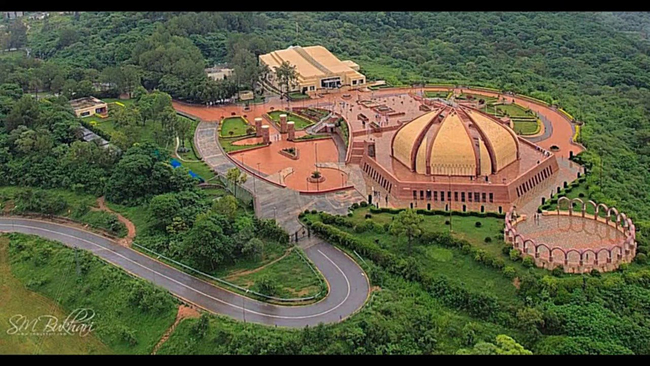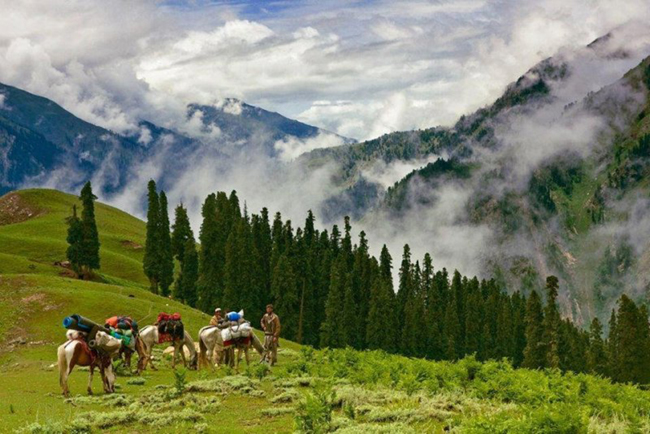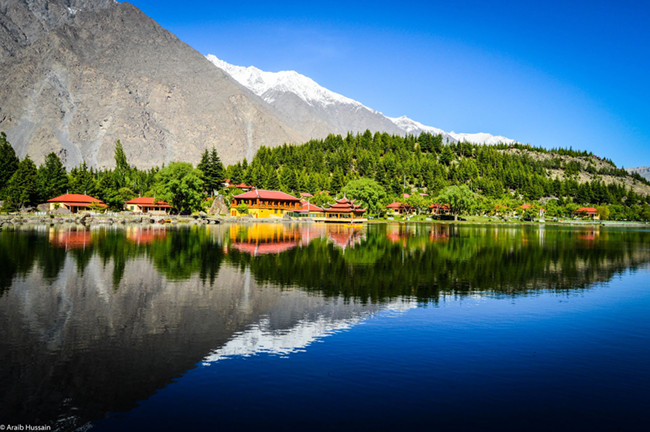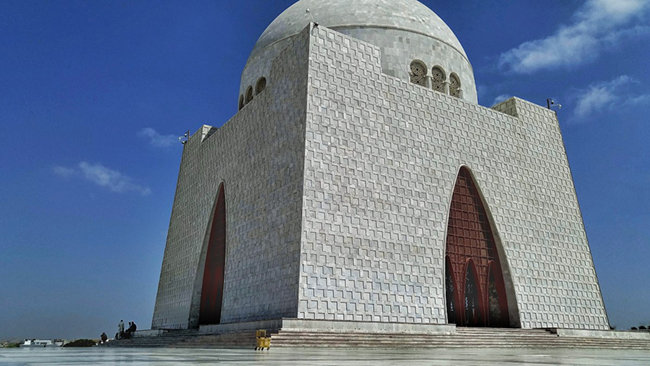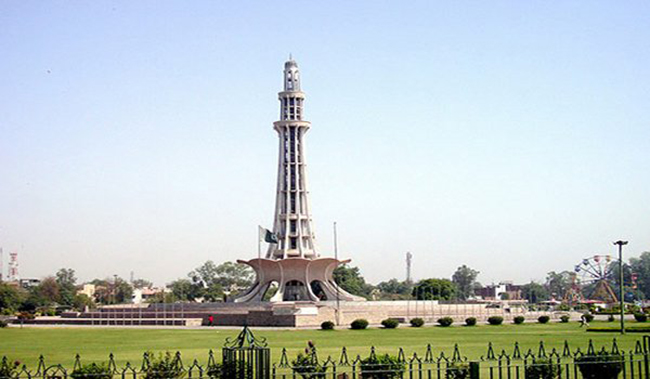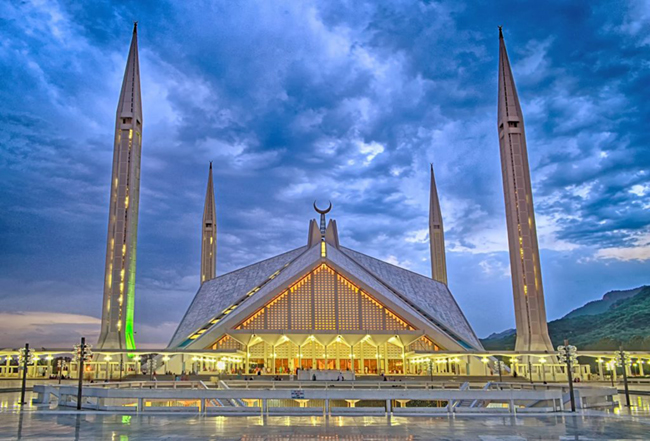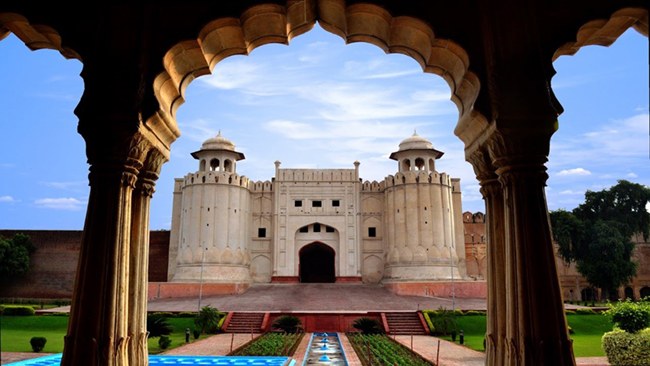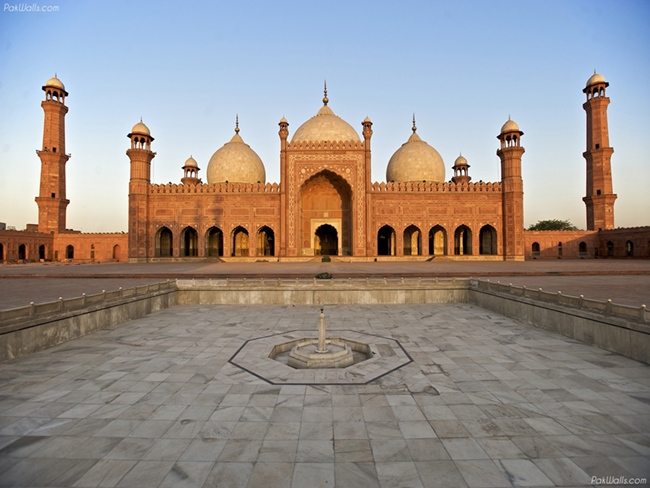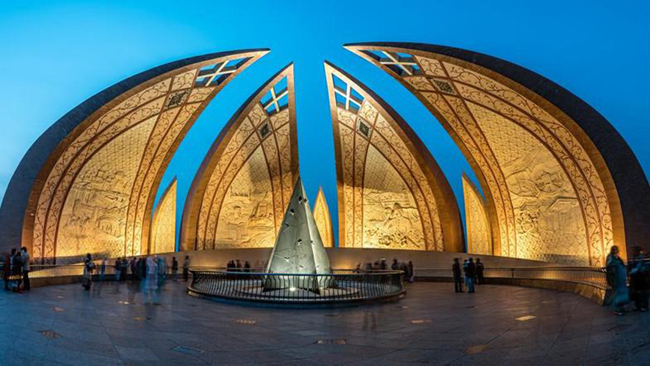(Dec 29 2018)
I. Background
The China-Pakistan Economic Corridor (CPEC) is a major and pilot project of the Belt and Road Initiative and one major platform for comprehensive and substantive cooperation between China and Pakistan.
CPEC is an important consensus reached by the two countries. The Chinese leaders attach great importance to the development of CPEC. In May 2013, Chinese Premier Li Keqiang proposed the initiative of CPEC during his visit to Pakistan. During President Xi Jinping's visit in April 2015, both sides agreed to promote a "1+4" pattern of economic cooperation, featuring a central role of the CPEC and four key areas including the Gwadar port, energy, transportation infrastructure and industrial cooperation, so as to achieve win-win results and common development. Both sides agreed on the principles of scientific planning, step-by-step implementation, consensus through consultation, mutual benefit and win-win results, as well as ensuring quality, safety, and environmental protection. During Prime Minister Imran Khan's visit to China, the two sides reaffirmed their complete consensus on the future trajectory of the CPEC, timely completion of its on-going projects and joint efforts for realization of its full potential with a focus on social-economic development, job creation and livelihoods and accelerating cooperation in industrial development, industrial parks and agriculture.
Over the past 5 years, under CPEC, 11 projects have been completed. 11 projects are under construction. The total investment of the above 22 projects is around 18.9 billion USD. There are 20 more projects in the pipeline.
Being the largest and most comprehensive project under BRI initiative, CPEC is of great political, economic and social significance to China and Pakistan. Politically, it is a demonstration of the political willingness of the two countries to promote Sino-Pakistan strategic partnership of cooperation; economically, it is a project that will bring joint development to the two countries; and socially, it is aimed at mobilizing the people to work together for the betterment of our two nations.
II. Mechanisms of Cooperation
To implement CPEC cooperation, China and Pakistan have set up a ministerial-level Joint Cooperation Committee on CPEC Long Term Planning (JCC). There are 7 joint working groups (JWG) under JCC, namely Planning, energy, transportation infrastructure, Gwadar port, industrial cooperation, social economic development and international cooperation. JCC is responsible for overall planning and coordination under CPEC, while the JWGs are responsible for the detailed planning and implementation of the projects.
The JCC secretariats are established in the National Development and Reform Commission (NDRC) of China and Ministry of Planning, Development and Reforms of Pakistan respectively. The two secretariats are responsible for communicating and coordinating with the line ministries related to the projects of CPEC. Until now, JCC has convened 8 meetings and since 2015 it is held on annual basis. The 8th meeting was held in Beijing on December 20, 2018. During the 8th JCC, both side reviewed the progress of the CPEC and reached new consensus. The two sides also decided to establish Joint Working Groups on social economic development and international cooperation.
The JCC has been effective in planning and construction of CPEC projects through equal, friendly consultations and mutual accommodation. The list of the projects as well as the long-term plan for CPEC were discussed and finalized in the JCC meetings.
III. Four major areas of the CPEC
A. Energy
Energy is the power engine for economic development and a key factor to ease load-shedding and improve the lives of millions of people.
Energy projects are highlighted as the priority sector under the CPEC framework. There are 15 energy projects planned as priority with a total generation capacity of 11,110MW, among which 7 are completed and in operation and 6 are under construction with a total capacity of 6,910MW. At present, Zonergy 300MW Solar Park, 50MW Dawood Wind Farm, Jhimpir UEP wind power project, Sachal 50MW Wind Farm, Sahiwal 2×660MW Coal-fired Power Plant, Port Qasim 2×660MW Coal-fired Power Plant and Three Gorges Second and Third Wind Power Projects have been completed. These projects have added 3240 MW to Pakistani national grid, amounting to more than 11% of the total installed capacity of 29,000 MW in Pakistan.
CPEC energy projects include hydro, solar, wind and coal-fired power plants. The major coal-powered plants use super-critical thermal technology, which is the most advanced environmental control technique for coal-fired plants currently. Each project has got the approval of environmental impact assessment by the Pakistani government before the construction.
CPEC Energy projects are providing affordable energy to Pakistani consumers in a diversified way. The tariff of power plants have been sharply decreased from 16-18 Rs to around 8 Rs per unit. With the introduction of CPEC energy projects, Pakistan also reduced its heavy dependence on gas and LNG power plants, which account for 50% of total installed capacity. Pakistan's foreign exchange has been saved in this regard.
CPEC energy projects are foreign direct investment based on commercial contracts, which are in accordance with the standard clauses provided by the Pakistani government. The CPEC energy projects are executed in accordance with BO(O)T mode. The financing of the energy projects are mainly provided by the equity of Chinese companies and commercial loans which borrowed from China Development Bank and other commercial banks in the rates of around 5%. In another word, any debt arising from CPEC energy project would be borne by the Chinese investors instead of the Pakistani government.
B. Infrastructure
Efficient transportation network is key to economic development. Currently, KKH Phase-II (Havelian-Thakot section), Karachi-Lahore Motorway (Sukkur-Multan section) and Lahore Orange Line are 3 projects under construction. The information highway for Laying of optical fiber cable (OFC) from Rawapindi to Khunjrab is in operation. These ongoing projects are funded by preferential loans from the Chinese government at around 2% interest rate with a total amount of 5.874 billion USD. The up-gradation of ML1 railway and the KCR are under discussion.
KKH Phase-II (Havelian-Thakot) project is located in Khyber Pakhtunkhawa with a total length of 118km, of which 39km is expressway with subgrade width of 24.7m, and 79km is Class-II highway with subgrade width of 12.3m. After the completion of KKH-II, the travel time from Havelian to Thakot will be reduced from 4 to 1.5 hours.
Peshawar-Karachi Motorway, also known as PKM project, starts from Karachi,passing through Lahore, and ends at Peshawar. The PKM (Sukkur-Multan section) is 392km long and 31.25m wide. It is a 6-lane access controlled Intelligent Transportation System (ITS) motorway funded by China's EXIM Bank. It is the largest project under the CPEC framework.
ML1 is another mega project agreed at the JCC meeting. In May 2015, the National Railway Administration of China and Ministry of Railways of Pakistan signed a Framework Agreement on joint feasibility study of upgrading ML-1 and establishment of Havelian dry port. The feasibility study was funded by the Pakistani government. Until now, preliminary design of phase I has been completed. In May 2017, the framework agreement on up gradation of ML-1 and establishment of Havelian dry port was signed between the NDRC and Ministry of Planning. Both sides are engaged in negotiations of technical and financial terms of the project. The completion of this project will provide convenient and low-cost transportation for cargo and passengers benefiting 70% of the population of Pakistan along the ML-1.
China-Pakistan cross-border optical fiber cable project is an early harvest project under CPEC, with a total amount of USD 44 million. It runs from Rawalpindi to Khunjrab. It includes 820 km cable laying, 9 sites civil work, equipment installation and commissioning in the equipment room, as well as the backup of microwave links. The working environment is harsh, in particular that there is an altitude of 4500m near Chinese-Pakistan boarder.
C. Gwadar Port
According to an agreement between China Overseas Ports Holding Company (COPHC), Gwadar Port Authority (GPA) and Singapore Port Authority in 2013, the development and operation of Gwadar Free Zone was handed over to the COPHC. Up to now, COPHC has invested 250 million USD in the port renovation. 5 new quay cranes, a 100,000 M2 storage yard, a seawater desalination plant with capacity of 220,000-gallon pure water/day, 2 sets of sewage disposal systems and cargo handling equipment have been installed and 80,000 M2 green space has been added to the port area. 400,000 tons of cargoes have been handled by Gwadar Port in 2017.
The Gwadar Free Zone is located in the northern part of Gwadar, about 7km away from the port. The planned development period is from 2015 to 2030, and is divided into four phases. The 923-hectare Free Zone includes an initial area (25 hectares) and the northern area (898 hectares). The initial area is located in the west of the existing port. Its main purpose is to play a pilot role in setting up industries, and to increase cargo capacity for the port. The construction of the initial area includes a few projects: infrastructure, business center, trade exhibition hall, cold storage, warehouse. By January of 2018, all those constructions have been completed. The Gwadar Free Zone was inaugurated and the first International Expo was held in January, 2018.
Around 30 companies have invested in the Free Zone, with direct investment of about $474 million. With the construction of the free zone, the city of Gwadar will become a commercial hub of the region in the near future.
The project of Gwadar East Bay Expressway was agreed by China and Pakistan during President Xi Jinping's visit to Pakistan in 2015. The EPC contract of the project was signed in September and the construction was started in November 2017. The construction period of the project is 36 months with the designed speed of 100 kilometers per hour, which is implemented by the China Communications and Construction Company (CCCC). After inauguration, the project will become the main channel for the cargo distribution of Gwadar Port and a vital communication line to connect the Free Zone in southern and northern areas of Gwadar.
D. Industry cooperation
The federal government of Pakistan and each province have attached paramount importance to industrial development and the construction of SEZs. The work has been in progress with the joint efforts of both sides.
In November 2015, Pakistan proposed to set up industrial cooperation working group under JCC, claiming that Pakistan has advantages such as adequate labour force and huge market potential to develop manufacturing. China agreed to strengthen cooperation in the following industries: steel, cement, automobile, construction materials, home appliances, textile, light industry and apparel, etc.
In March and April 2016, Pakistan had sent two delegations to China for studying China's best practice in SEZ development. In November 2016, the two side established the joint working group and held the 1st meeting on industrial cooperation, during which the two sides agreed to work out the mechanism, key areas of cooperation and key projects. Later on, in the 6th JCC Meeting in the same month, Pakistan had submitted a list of 9 SEZs to China.
From 2017 to 2018, China's expert panel had 3 successive on-site visits to 9 proposed SEZs, trying to make a comprehensive analysis and proposal on the strategy of industrial development for Pakistan. Through interactions with provincial governments, business associations and enterprises, the expert panel understood their demands in local development. The Chinese experts group suggested that the development strategy of each industrial park under CPEC project must be combined with the economic foundation and actual conditions in the locality, with distinctive features and differentiated approaches. The Chinese expert panel had also sent BOI its appraisals of the feasibility studies of 6 SEZs, while the rest 3 are to be submitted.
In early 2018, Pakistani Government had instructed BOI to formulate more accurately-targeted and more favorable policies on top of current preferential policies for two to three SEZs that were to be listed as key projects under CPEC. The two sides are negotiating details on the implementation of the Rashakai SEZ, which will be inaugurated as early as the first quarter of 2019. During the 8th JCC meeting in Beijing, the NDRC and BOI signed the MOU on industry cooperation, which will facilitate the cooperation in this regard.
Formulating and implementing preferential policies are a complex and systematic process which involves multiple ministries and institutions both at national and regional level. Chinese side suggests that Pakistani side should review relevant policies in a systematic manner to put forward trial or temporary institutional documents that will ensure immediate implementation of the policies. During the implementation, timely revision is required in the event of new situations to ensure the coherence, sustainability and feasibility of each preferential policy.
IV. Job creation and social responsibility
Localization is the principle that China adheres to in CPEC. According to the preliminary statistics, CPEC projects have created more than 75,000 direct job opportunities for Pakistani people. In order to promote economic development and employment of Pakistan, Chinese companies also subcontract a large number of projects to local Pakistani companies. This also develops relevant upstream and downstream industries, such as raw material processing, catering industry which also provide more employment opportunities for local people.
According to a report by Deloitte in 2017, CPEC will create 700,000 jobs for Pakistan from 2015 to 2030. A recent study by CPEC Centre of Excellence, Ministry of Planning, Development and Reform of Pakistan showed that CPEC could help create 1.2 million jobs under its presently agreed project.
Chinese companies have engaged themselves in three areas to fulfill their social responsibilities in collaboration with the Chinese Government. First is vocational training and education. During the 8th JCC, both side held the first social economic joint working group meeting. The Chinese side has proposed to conduct social cooperation on agriculture, education, medical care, poverty alleviation, water supply, vocational training.
The Chinese companies shared advanced techniques and successful experience to help Pakistan transform its human resources into advantages. The Chinese companies have sponsored thousands Pakistani students to study in China with scholarships and sent hundreds of Pakistani engineers and professionals to China for training. Chinese universities have set up two vocational training centers with local universities in Lahore and Quetta.
China Fund for Peace and Development (CFPD) has built the Faqeer primary school in Gwadar, which is known as "Chinese Pakistan Friendship school". The School was completed and put into use in September 2016, accommodating 500 students, more than double of its designed capacity. Since the operation of the school, the Chinese company has donated books, bags, stationery, uniforms and 3 school buses for the students. The Chinese Embassy has also made donations to the school.
Second is medical care. A 500m²CPEC emergency medical center was set up in Gwadar port in May, 2017. It was donated and run by the Chinese Red Cross Foundation with a top class Chinese medical team working there, providing local residents with necessary first aid treatment and free medical examinations for local primary school students. Many Chinese companies have also donated medicine to residents near the project, and provided free medical examinations to the local people.
Third is mini projects for uplifting the living standards of poor people across different parts of Pakistan. Chinese companies are actively exerting their own advantages to build bridges and drill wells for residents to help them solve water and travel problems.
V. CPEC Long-Term Plan
In line with the consensus reached between leaders, relevant ministries and departments of both countries have set up a cooperation mechanism to coordinate the development of CPEC and jointly formulated the Long-Term Plan for China-Pakistan Economic Corridor (2017-2030).
China and Pakistan signed the Long-Term Plan at the 7th JCC after obtaining consent of both federal government and all the Pakistani provincial government. The plan provided the macro guidance for implementation of CPEC in the next phase, and could be adjusted based on the real situation as well as the consensus between the two parties during its implementation in the future. The Long-term Plan has made planning and design for CPEC's next step in the areas of connectivity, energy, trade and industrial parks, agricultural, poverty alleviation, tourism, people's livelihood and finance. This plan is effective till 2030, the short-term projects included will be considered up to 2020; medium-term projects up to 2025; and long-term projects up to 2030. It was made public by the two governments after it was signed.

